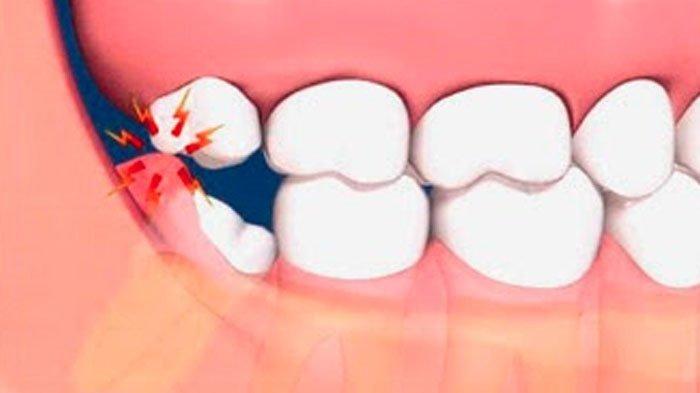The Troublesome World of Tooth Cracks and Fractures: Understanding the Consequences on Oral Health
Maintaining good oral health is essential for overall well-being. A healthy set of teeth and gums can make a significant difference in one’s quality of life. However, oral health issues can arise unexpectedly, causing discomfort, pain, and even long-term damage. In this article, we will discuss a common yet often-misunderstood problem: tooth cracks and fractures.
What are tooth cracks and fractures?
Tooth cracks and fractures refer to the cracking or breaking of the enamel, dentin, or cementum of a tooth. Enamel is the hard, outer layer of the tooth, while dentin is the softer, inner layer. Cementum is a thin layer of bone-like tissue that covers the root of the tooth. When a tooth crack or fracture occurs, it can lead to sensitivity, pain, and even tooth loss if left untreated.
Causes of tooth cracks and fractures
There are several factors that can contribute to tooth cracks and fractures. Some common causes include:
- Bite force: Using excessive force while chewing or biting can cause the tooth to crack or fracture.
- Habits: Grinding or clenching the teeth, known as bruxism, can put excessive pressure on the teeth, leading to cracks and fractures.
- Dental work: Improperly placed fillings, crowns, or other dental restorations can cause stress on the tooth, leading to cracks and fractures.
- Age: As we age, our teeth naturally become more susceptible to cracks and fractures due to the gradual wear and tear.
- Tooth decay: The presence of tooth decay can weaken the tooth, making it more prone to cracks and fractures.
- Tooth whitening: Using teeth whitening products that are too abrasive or using them excessively can cause tooth cracks and fractures.
Symptoms of tooth cracks and fractures
If you experience any of the following symptoms, it’s possible that you have a tooth crack or fracture:
- Sensitivity: Teeth sensitivity to hot, cold, sweet, or sour substances can be a sign of a crack or fracture.
- Pain: Moderate to severe pain in the affected tooth or surrounding area can indicate a crack or fracture.
- Sensitivity to pressure: If you experience pain or discomfort when biting or chewing, it could be a sign of a crack or fracture.
- Visible cracks or fractures: If you notice a visible crack or fracture in your tooth, it’s essential to seek dental attention promptly.
Consequences of tooth cracks and fractures
Left untreated, tooth cracks and fractures can lead to a range of complications, including:
- Infection: Bacteria can enter the crack or fracture, leading to infection and potentially spreading to other parts of the mouth.
- Pain: The pain caused by a tooth crack or fracture can become debilitating, affecting daily activities and quality of life.
- Tooth loss: If left untreated, tooth cracks and fractures can eventually lead to tooth loss, requiring costly and invasive dental restoration procedures.
- Systemic health issues: Research suggests that oral infections can be linked to systemic health issues, such as heart disease, diabetes, and respiratory infections.
Treatment options for tooth cracks and fractures
Fortunately, tooth cracks and fractures are treatable. Depending on the severity and location of the crack or fracture, your dentist may recommend:
- Fillings: Filling the crack or fracture with a tooth-colored material can help stabilize the tooth.
- Crowns: Placing a crown over the affected tooth can provide additional support and protection.
- Bonds: Bonding the crack or fracture with a tooth-colored resin can help strengthen the tooth.
- Root canals: If the crack or fracture extends to the pulp, a root canal procedure may be necessary to remove infected tissue.
Prevention is key
While tooth cracks and fractures can be treated, prevention is always better than cure. Here are some tips to help prevent tooth cracks and fractures:
- Maintain good oral hygiene: Practice regular brushing and flossing to remove plaque and bacteria that can contribute to tooth decay and cracks.
- Use a fluoride toothpaste: Fluoride toothpaste can help strengthen tooth enamel and prevent decay.
- Avoid biting or chewing on hard objects: Refrain from biting or chewing on hard objects, such as ice, pens, or hard candy.
- Manage stress: Practice stress-reducing techniques, such as meditation or deep breathing, to help manage stress and alleviate bruxism.
- Visit your dentist regularly: Regular dental check-ups can help detect tooth cracks and fractures early on, preventing more extensive damage.
Anda akan mengandalkan frasa kunci lain semacam berikut ini:
Jika Gigi Geraham Habis, Penanganan Gigi Bungsu Tumbuh, Lama Gigi Bungsu Tumbuh, Gigi Geraham Yang Harus Dicabut, Gigi Geraham Bawah Ompong, Gigi Geraham Busuk, Tumbuh Gigi Bungsu Atas, Gigi Bungsu, Tumbuh Geraham Belakang, Gigi Geraham Tinggal Sedikit, Benjolan Di Gusi Geraham, Gigi Bungsu Normal, Cara Mencabut Gigi Geraham Sendiri Di Rumah, Gigi Geraham Atas Turun, Cara Mencabut Gigi Geraham Sendiri, Gigi Bungsu Berlubang, Biaya Pencabutan Gigi Geraham Bungsu, Pertumbuhan Gigi Geraham, Daging Tumbuh Di Gigi Geraham, Harga Crown Gigi Geraham, Gigi Geraham Orang Dewasa, Jika Gigi Geraham Bawah Dicabut, Cara Mencabut Gigi Geraham Sendiri Yang Masih Keras, Geraham Goyang, Gigi Geraham Tumbuh Di Usia 23, Gigi Geraham Akan Tumbuh Lagi,
In conclusion, tooth cracks and fractures are common oral health issues that can have significant consequences if left untreated. By understanding the causes, symptoms, and treatment options, you can take proactive steps to prevent and address tooth cracks and fractures. Remember, prevention is key, and regular dental care can help ensure a healthy, pain-free smile for years to come.

